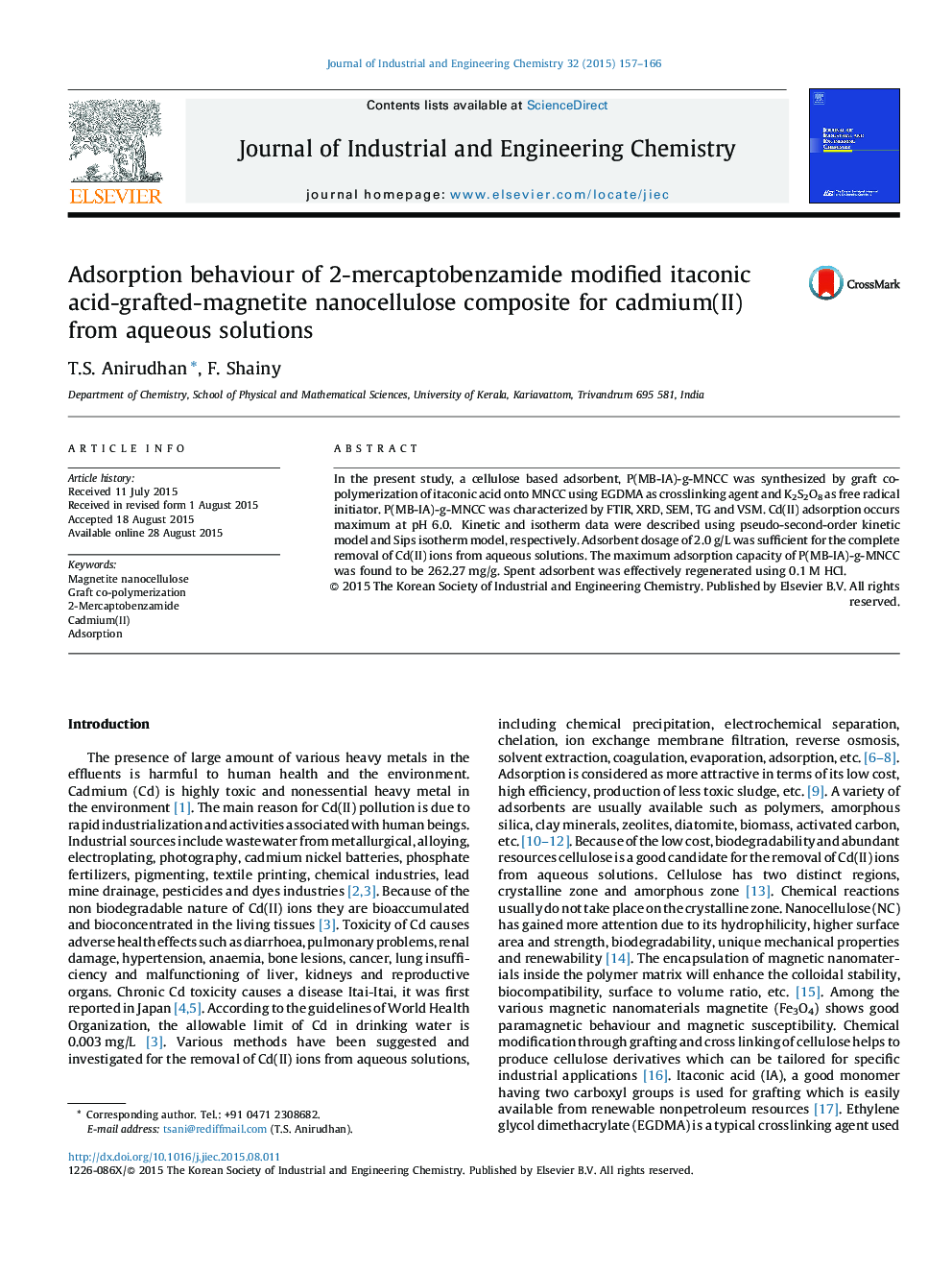| Article ID | Journal | Published Year | Pages | File Type |
|---|---|---|---|---|
| 227048 | Journal of Industrial and Engineering Chemistry | 2015 | 10 Pages |
•P(MB-IA)-g-MNCC is an efficient adsorbent for the removal of cadmium(II) ions.•The maximum adsorption capacity was found to be 262.274 mg/g.•P(MB-IA)-g-MNCC contains carboxyl and sulfhydryl groups.•The kinetic data were found to follow pseudo-second-order.•The thermodynamic parameters indicate the spontaneous and endothermic nature of adsorption process.
In the present study, a cellulose based adsorbent, P(MB-IA)-g-MNCC was synthesized by graft co-polymerization of itaconic acid onto MNCC using EGDMA as crosslinking agent and K2S2O8 as free radical initiator. P(MB-IA)-g-MNCC was characterized by FTIR, XRD, SEM, TG and VSM. Cd(II) adsorption occurs maximum at pH 6.0. Kinetic and isotherm data were described using pseudo-second-order kinetic model and Sips isotherm model, respectively. Adsorbent dosage of 2.0 g/L was sufficient for the complete removal of Cd(II) ions from aqueous solutions. The maximum adsorption capacity of P(MB-IA)-g-MNCC was found to be 262.27 mg/g. Spent adsorbent was effectively regenerated using 0.1 M HCl.
Graphical abstractA novel adsorbent 2-mercaptobenzamide modified itaconic acid-grafted-magnetite nanocellulose composite [P(MB-IA)-g-MNCC] for the removal of Cd(II) ions from aqueous solutions.Figure optionsDownload full-size imageDownload as PowerPoint slide
